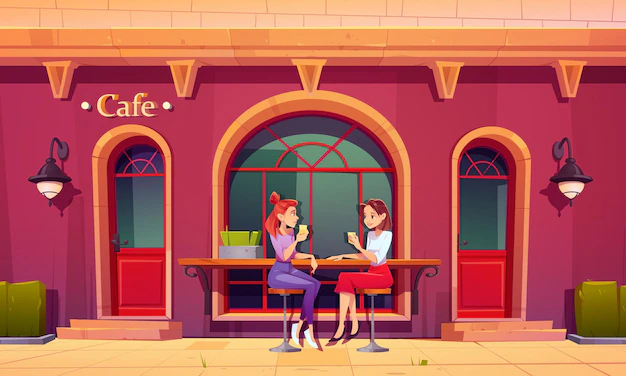In the heart of Norfolk Ghetto coffee, Virginia, during the transformative 1960s, a small yet iconic venue emerged as a hub for folk music, poetry, and social change—the Folk Ghetto Coffee House. Established in 1966, this coffee house became a sanctuary for artists, musicians, and free thinkers, embodying the spirit of the era’s countercultural movement. Though its time in the spotlight was brief, its impact on Norfolk’s creative and social landscape was profound.
Table of Contents

The Birth of Folk Ghetto Coffee House
The 1960s were a time of social and political upheaval, with the civil rights movement, anti-war protests, and a newfound appreciation for folk music shaping American culture. Against this backdrop, the Folk Ghetto Coffee House was founded as a safe space for artistic expression and community discourse. Unlike conventional coffee houses, this venue was more than just a place to grab a cup of coffee—it was a stage for revolutionaries and dreamers.
Located in Norfolk, VA, Folk Ghetto attracted a diverse crowd of musicians, poets, and activists who sought a platform for their voices. It was a meeting ground for progressive ideas, where individuals could discuss pressing social issues while enjoying live music in an intimate setting.
Folk Music and the Coffee House Scene
During the 1960s, coffee houses played a pivotal role in the folk music revival. Inspired by the Greenwich Village folk scene in New York, venues like the Folk Ghetto in Norfolk provided a stage for both local and traveling folk musicians. These artists often used their music as a means of storytelling and activism, addressing themes such as racial equality, war resistance, and human rights.
At Folk Ghetto, attendees could experience acoustic performances by emerging and established folk artists, whose lyrics resonated with the spirit of change. The venue’s dim lighting, warm ambiance, and communal atmosphere made it the perfect setting for soul-stirring performances that lingered in the hearts of those who attended.
A Countercultural Sanctuary
Folk Ghetto Coffee House was not just about music—it was about community and activism. The coffee house served as a gathering place for intellectuals, students, and artists who wanted to discuss the pressing issues of the time. Discussions on topics like the Vietnam War, civil rights, and free speech were common, making it a haven for those advocating for societal change.
The Role of Poetry and Art
Poetry readings were another staple of Folk Ghetto’s scene. Local poets and writers would take the stage, sharing pieces that challenged the status quo and celebrated the bohemian lifestyle of the era. Art exhibitions, featuring works that echoed the themes of peace and resistance, further solidified the coffee house’s reputation as a creative hub.
The Cultural Legacy of Folk Ghetto Coffee House
Though its doors may have closed after only a few years, the spirit of the Folk Ghetto Coffee House lives on in Norfolk’s cultural memory. The conversations, music, and art that filled its walls left a lasting impression on the local creative community. Many of the individuals who found inspiration within its space went on to become lifelong artists, activists, and cultural influencers.
Even today, coffee houses and music venues in Norfolk continue to draw from the energy and ethos of the Folk Ghetto, carrying forward its tradition of artistic expression and social awareness.
Conclusion
The Folk Ghetto Coffee House in Norfolk, VA (1966) was more than just a coffee shop—it was a beacon of culture, activism, and artistic freedom. In a time of great social change, it provided a space where musicians, poets, and visionaries could come together and share their voices. Though its time was short-lived, its impact continues to resonate, serving as a reminder of the power of community, art, and music in shaping history.
Meta Description
Discover the rich history of Folk Ghetto Coffee House Norfolk VA (1966)—a cultural hub for folk music, poetry, and activism. Learn how this iconic venue shaped Norfolk’s artistic scene and left a lasting legacy.



